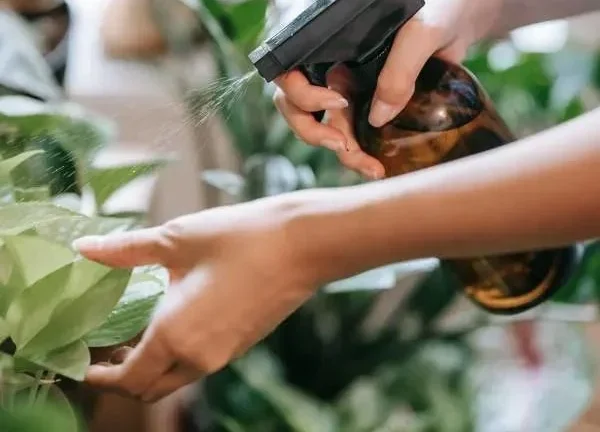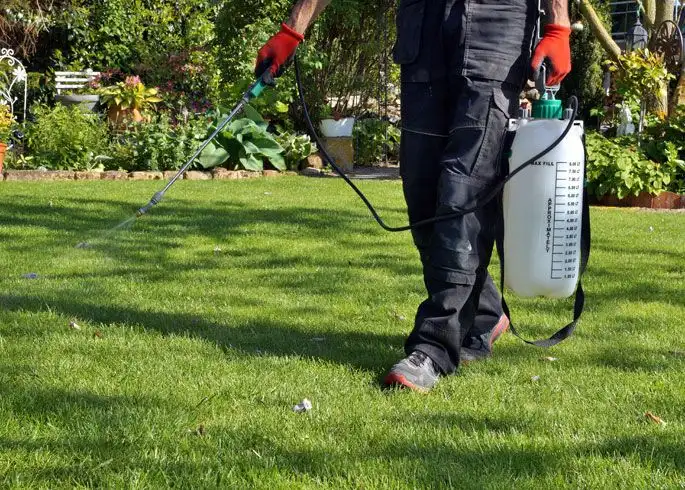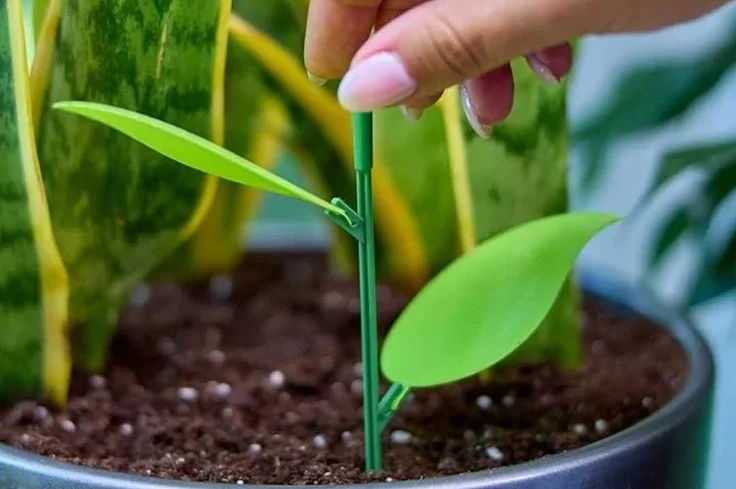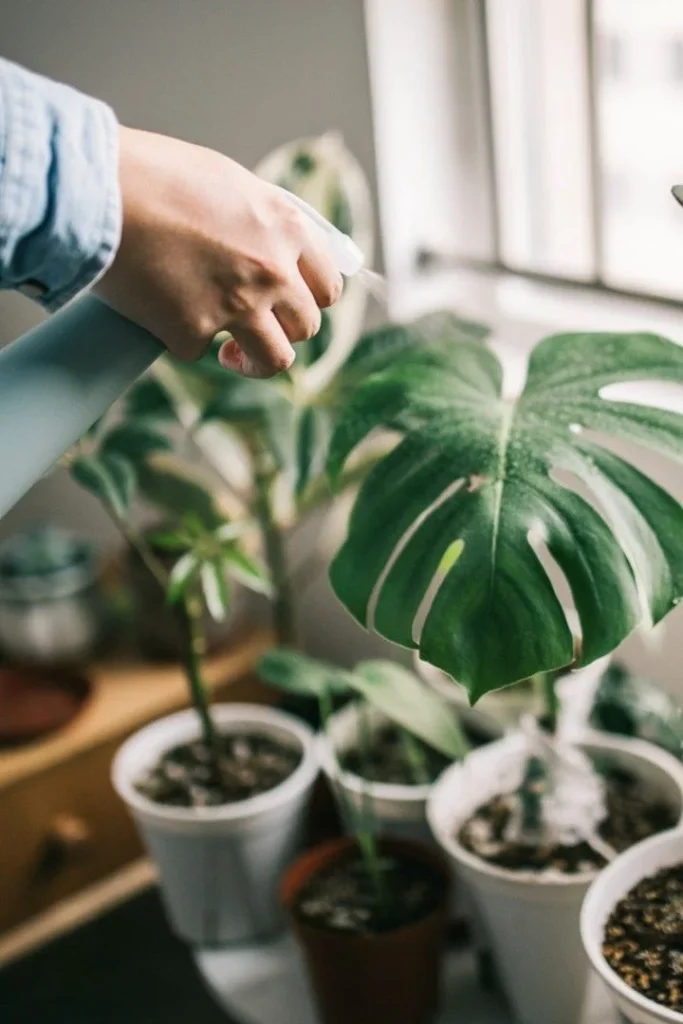If you love your houseplants, nothing feels worse than noticing tiny flies buzzing around them. Understanding how to get rid of indoor plant flies is essential for keeping your plants healthy and your home comfortable.
These small pests often called fungus gnats thrive in damp soil and multiply fast. Thankfully, you can remove them easily with natural methods and a few preventive steps. Let’s explore how to banish them for good!
What Are Indoor Plant Flies and Why Do They Appear?
Indoor plant flies, or fungus gnats, are tiny flying insects that lay eggs in moist potting soil. When the larvae hatch, they feed on organic matter and sometimes plant roots.
They usually appear because of overwatering, poor soil drainage, or decaying plant material. In other words, these little flies love moist environments—so the wetter your soil, the more they thrive.
Signs That Your Plants Have Flies
Before you jump into solutions, it’s important to confirm that you’re dealing with fungus gnats and not fruit flies. Identifying the problem correctly helps you choose the right method to eliminate them quickly.
How to Identify Indoor Plant Flies

You might be wondering how to spot these tiny pests early. Here are some telltale signs that your plants are suffering from a fly infestation:
-
You see small black or gray flies hovering near the soil or base of plants.
-
The soil appears damp or moldy.
-
Your plant’s leaves start to yellow or wilt.
When to Take Action
Once you notice these signs, it’s time to act fast before they spread to other plants. Early detection and quick response are key to protecting your indoor garden and keeping it pest-free.
1. Let the Soil Dry Out
The simplest solution to get rid of indoor plant flies is to reduce moisture. Fungus gnats cannot survive in dry soil.
Let the top inch of soil dry out completely between watering. This interrupts their life cycle by killing the larvae before they can develop into adults.
Additionally, consider watering your plants from the bottom instead of the top this keeps the soil surface drier and less attractive to flies.
2. Use Sticky Traps
Sticky traps are an excellent and non-toxic way to capture adult flies. You can find yellow sticky cards in garden stores or online.
Place them near the base of your plants. The bright color attracts the flies, and once they land, they stick to the surface.
As a result, you’ll reduce the adult population quickly, preventing them from laying more eggs.
3. Try Natural Remedies

If you prefer chemical-free methods, several natural options can help.
Apple Cider Vinegar Trap: Mix a few drops of dish soap with apple cider vinegar in a small bowl. The scent lures flies in, and the soap breaks the surface tension, trapping them.
Cinnamon Powder: Sprinkle cinnamon on the soil. It has antifungal properties that prevent the growth of fungus the gnats feed on.
Neem Oil Spray: Mix neem oil with water and spray it lightly over the soil. Neem oil kills larvae and prevents new infestations.
These natural remedies are safe for plants and people but deadly for flies.
4. Replace or Refresh the Soil
If the infestation is severe, changing the soil may be the best option. Remove the top few inches of the old soil and replace it with fresh, sterile potting mix.
Be sure to clean the pot thoroughly before refilling it. You can also add a layer of sand or gravel on top of the soil to prevent flies from laying eggs again.
5. Introduce Beneficial Nematodes
For stubborn cases, beneficial nematodes are a powerful biological control method. These microscopic organisms attack the larvae in the soil but are completely harmless to plants and humans.
Simply mix them with water and pour the solution into the plant soil. Within days, the larvae population will drop dramatically.
6. Improve Air Circulation
Flies prefer stagnant, humid air. By increasing airflow, you make the environment less comfortable for them.
Use a small fan near your plants to keep the air moving. Not only will this deter flies, but it also helps prevent fungal growth.
7. Avoid Overwatering
Overwatering is the number one reason indoor plant flies appear in the first place. Always check the soil before watering if it’s still moist, wait another day or two.
Transitioning to a strict watering routine will make a big difference in fly control. Additionally, ensure your pots have drainage holes so excess water can escape easily.
8. Clean the Area Around Your Plants
Sometimes, the issue isn’t just in the soil but also in the surrounding area. Dead leaves, spilled soil, or decaying organic matter attract flies.
Regularly wipe down surfaces, remove fallen leaves, and keep the area around your plants tidy. This simple habit helps prevent future infestations.
9. Use Hydrogen Peroxide Solution
A diluted hydrogen peroxide solution can kill larvae instantly. Mix one part 3% hydrogen peroxide with four parts water, and use it to water your plants once every two weeks.
The bubbling action eliminates larvae without harming the plant roots, making it a quick and efficient solution.
10. Monitor Your Plants Regularly

Finally, prevention is key. Regularly inspect your plants for early signs of flies. If you catch them early, the solutions above will work much faster.
By maintaining clean soil, balanced watering, and good airflow, you’ll ensure that your indoor jungle stays fly-free year-round. Additionally, if you’re dealing with other plant issues like yellowing leaves, you can check out this detailed guide on Peace Lily Yellow Leaves to keep all your plants looking healthy and vibrant.
Frequently Asked Questions (FAQs)
How long does it take to get rid of indoor plant flies?
Usually, it takes one to two weeks to eliminate indoor plant flies completely, depending on the infestation level and the method you use.
Are indoor plant flies harmful to humans?
No, they’re not dangerous to humans. However, they can harm plants by damaging roots and slowing growth.
Can I use chemical sprays to remove flies?
While you can, it’s better to use natural methods first. Chemical sprays can sometimes harm plants or leave toxic residues indoors.
Do flies come back after treatment?
They can, especially if you keep overwatering or leave soil damp. That’s why preventive steps are crucial.
Conclusion
Learning how to get rid of indoor plant flies is easy when you understand their habits. Firstly, by keeping the soil dry, you stop their breeding cycle. In addition, using natural remedies like neem oil or vinegar traps helps remove them effectively. Moreover, maintaining proper plant care ensures they stay healthy.
However, it’s important to stay consistent with these steps. Consequently, the number of flies will decrease day by day. As a result, your indoor space will feel fresher and cleaner. Furthermore, regular inspection of the soil will prevent future infestations.
Therefore, adopting preventive measures ensures they never return. Similarly, improving air circulation discourages flies from coming back. Eventually, with a little patience and persistence, you’ll notice lasting results. Finally, your indoor plants will thrive healthy, vibrant, and completely fly-free!
If you’re looking to keep your houseplants in their best condition, you might also enjoy this helpful guide on repotting aloe vera plants it’s full of easy tips to boost plant growth and maintain healthy roots naturally.


















